Star Wars has provided pop culture media with a rich universe filled with iconic characters. Darth Vader is undoubtedly in that category, with the Sith Lord also arguably the biggest standout movie villain in Hollywood.
- The Great Jedi Purge during Revenge of the Sith
- The final battle with Obi-Wan in A New Hope
- Luke’s bloodline revelation in The Empire Strikes Back
- Redemption in Return of the Jedi
- A one-man army in Rogue One
- Rematch in Obi-Wan Kenobi
- Intercepting Ezra’s escape in Rebels
- The fated encounter against Ahsoka in Rebels
- The chase in Jedi: Fallen Order
- Outnumbered in Vader Down
His popularity has long since transcended the franchise he debuted in, and Vader has made for some of the most impactful moments in all of Star Wars media. Whether it’s his fall from grace in the prequels, his road to redemption in the original trilogy, or the wide variety of spinoffs, Darth Vader has ensured the Dark Side of the Force won’t soon be forgotten.
The Great Jedi Purge during Revenge of the Sith

The prequel trilogy may have stumbled more often than not, but if nothing else, Revenge of the Sith proved to be a strong landing. It delivered on the grandiose space opera and epic tragedy element that has been used since the original trilogy, and Anakin Skywalker’s descent and fall from grace into Darth Vader was key to conveying that.
In the movie’s final act, Emperor Palatine/Darth Sidious gains the upper hand and executes the infamous Order 66, ushering in the Great Jedi Purge. John Williams’ timeless score helps punctuate the dark turning point and grim massacre of the newly-christened Sith Lord across the galaxy, whether it be on adults or helpless children.
The final battle with Obi-Wan in A New Hope
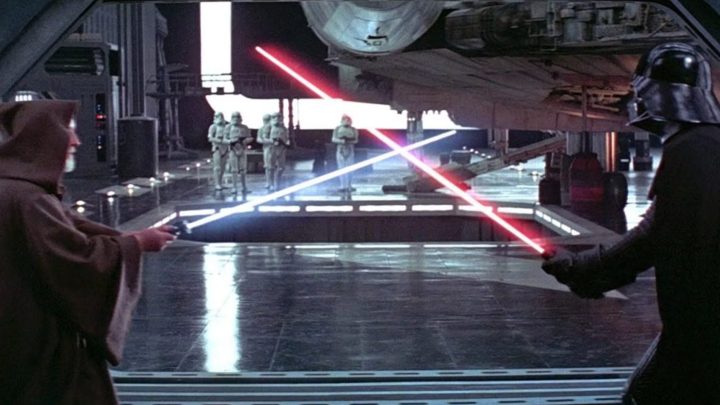
Star Wars: Episode IV – A New Hope will always be considered an all-time great, and even in 1977, Darth Vader showed considerable power in his brief yet impactful scenes. Of course, it’s been made far more impactful with the added context provided in other Star Wars projects in the decades that followed, but his final bout against Obi-Wan Kenobi is still a pivotal moment.
The stage was perfectly set, with Luke Skywalker, Han Solo, and Leia Organa left to watch helplessly as the revered Jedi Master has to take on a younger, fiercer opponent one-on-one. While the choreography was clearly limited to the filmmaking capabilities of the time, it strangely works given the context. It’s careful, slow, and methodical, culminating in the Jedi giving himself into his fate by allowing Vader to strike him down. This scene is simultaneously one of Obi-Wan’s most important moments as well.
Luke’s bloodline revelation in The Empire Strikes Back
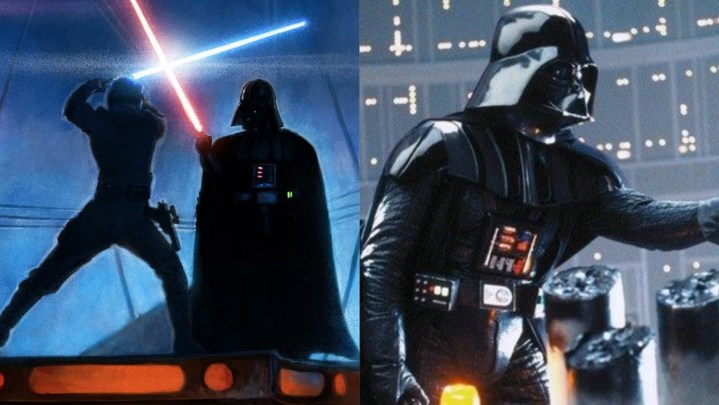
Delivering a sequel that matches — let alone exceeds — the acclaim of its predecessor is a rare feat, and alongside the likes of more modern examples like The Lord of the Rings: The Two Towers and The Dark Knight, Star Wars: Episode V – The Empire Strikes Back is one of the more classic cases.
It got darker and more intimate than A New Hope, and Darth Vader’s deepening dynamic with Luke was a major factor in that. Their duel in the cloud city of Bespin where a daunting Vader beats down a hopelessly outclassed Luke, delivering a revelation that changes the trajectory of his life forever goes down in one of the most iconic scenes in movie history. It was one of the original “greatest movie plot twists” of all time.
Redemption in Return of the Jedi
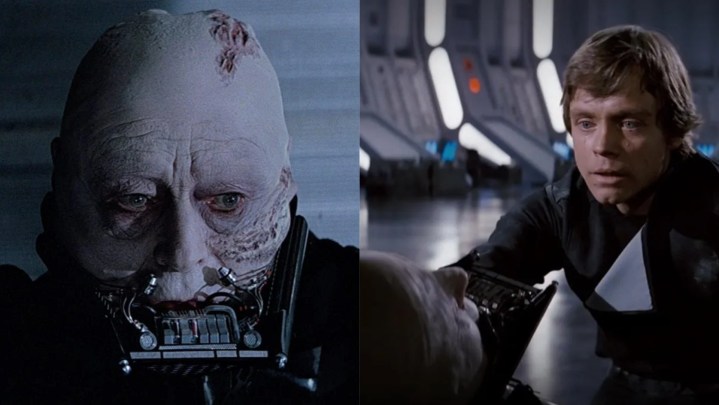
The Skywalker Saga is one characterized by highs and lows and fashioned into something of a sci-fi fantasy Shakespearian tragedy. Return of the Jedi marks the end of something bleak and the start of something brighter, and Darth Vader’s ultimate sacrifice play is the most bittersweet piece of this story.
In a final duel between Vader and Luke on the Death Star before the nefarious Palpatine, the latter refuses to give in to his darker temptations, instead choosing the light in both him and his father. After being torn down by the Emperor, something in Vader finally shines through, giving himself to save the life of his son and atone for decades of horror. Vader’s final moments were equal parts somber and beautiful, in part because they weren’t as Vader, but as Anakin Skywalker. But, as a wise man once said, “no one’s ever really gone.”
A one-man army in Rogue One
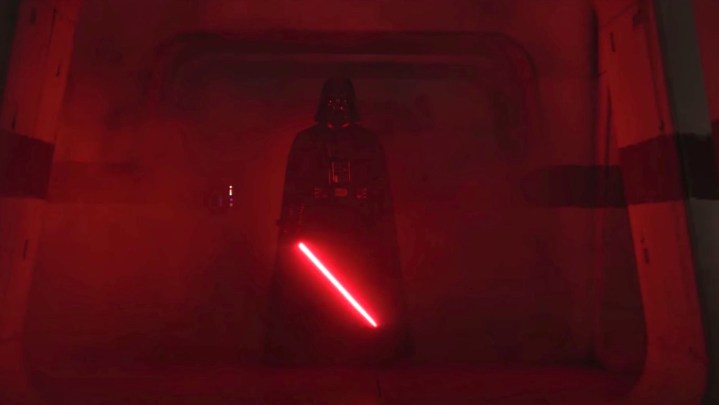
Rogue One: A Star Wars Story was likely the best movie to come out of the Disney era, and while this spin-off prequel didn’t have Darth Vader as its focus, he still effortlessly commanded the brief scenes he was in. The story was an overall thrilling, emotional, and inspiring tale of the spark of rebellion against the Empire, but the tension that the Sith Lord brought in the movie’s closing moments is some of the best in the franchise.
After the Rebels are able to get the Death Star plans off Scarif thanks to Jyn Erso and Co.’s brave sacrifice, a moment of terror ensues when Vader leads a slaughter in a hallway with trapped soldiers. It was a grand entrance, pulse-pounding, and unforgettable scene that showed the apocalyptic power of Darth Vader as almost a horror/movie monster-like figure. Who says Vader doesn’t appreciate showmanship?
Rematch in Obi-Wan Kenobi
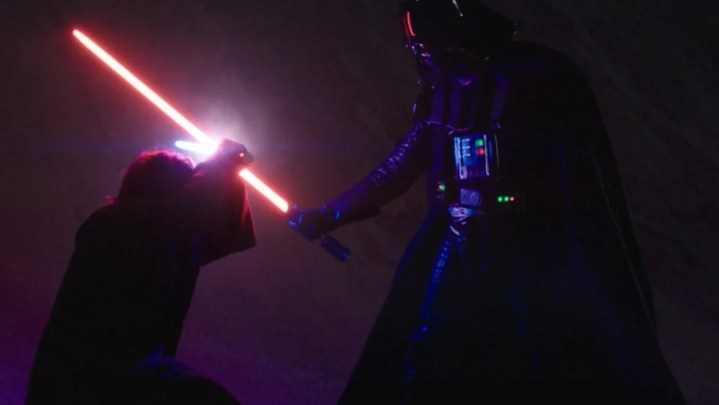
Disney+’s Obi-Wan Kenobi limited series featured some expectedly dramatic moments between the reunion of Ewan McGregor’s take on the Jedi Master and Hayden Christensen’s long-awaited return as the Sith Lord. We see an older, wearier Obi-Wan beaten down by years spent in exile and biding his time watching over Luke on Tatooine.
The downtrodden Jedi goes through a galaxy-wide quest to regain his sense of self and clashes with his fallen apprentice twice. The last episode brought a worthy spectacle to finish the show, putting to screen a modernized duel that makes use of current filmmaking advancements to deliver a more kinetic and physical fight with Darth Vader.
Intercepting Ezra’s escape in Rebels
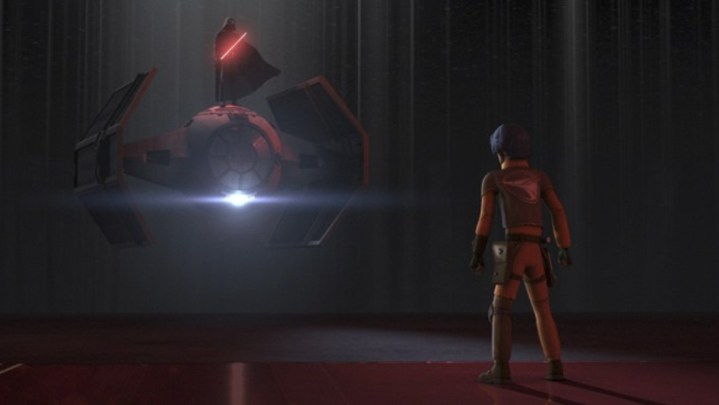
In Dave Filoni’s acclaimed work on the Rebels animated series, Darth Vader shows off some more of his hidden penchant for theatrics. Twilight of the Apprentice sees Jedi Padawan Ezra Bridger attempt to escape an ancient Sith Temple on Malachor — after teaming up with Maul, no less — before its Holocron falls into darker hands. Of course, Vader catches wind of this attempt and intercepts his escape in a way only he would.
He descends into the temple in front of Ezra while standing on top of his special TIE Fighter and briefly fighting before Kanan Jarrus saves him. Darth Vader has given some of the most memorable quotes across mediums, and his retort to Ezra claiming he isn’t afraid of the Sith Lord is masterfully cold: “Then you will die braver than most.” It’s fantastically written and delivered because it isn’t so much a retort as it is Vader simply stating an observation.
The fated encounter against Ahsoka in Rebels
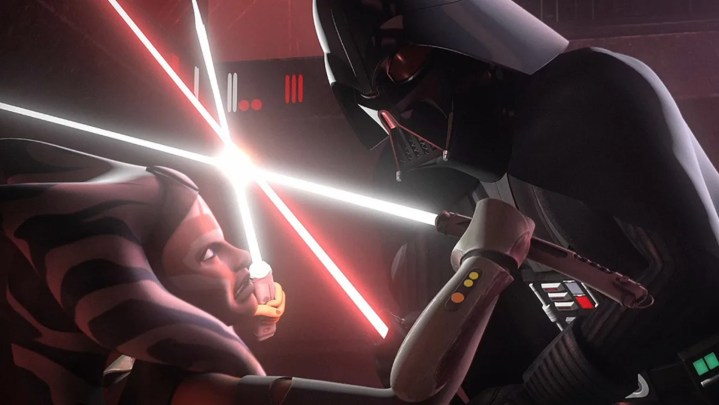
Yet another melancholy moment for the Dark Lord of the Sith, Rebels saw Vader meet face-to-face once again with his former apprentice, Ahsoka Tano. Ever since Filoni’s The Clone Wars animated series, she’s become a franchise favorite and has been given a bigger spotlight than ever following Rosario Dawson’s depiction of her on Disney+.
In the episode Twilight of the Apprentice, Ahsoka confronts Vader to buy time for Ezra to escape with the Sith Holocron, portraying a breathtaking battle with emotionally gut-wrenching stakes. A shred of Anakin seems to bleed through the scowl of Vader’s black helmet in a rare instance of the villain showing vulnerability before, ultimately, re-embracing the Dark Side.
The chase in Jedi: Fallen Order

Developer studio Respawn Entertainment’s Star Wars Jedi: Fallen Order was the game fans had been waiting years on to bring a modern lightsaber-focused action-adventure game after EA spent years squandering the license. It put players in the role of Jedi Padawan Cal Kestis on a journey of healing and rescuing future Force sensitives from the grip of the Empire, but it wouldn’t end without another horror-like cameo from Darth Vader.
When the Ninth Sister redeems herself at the Inquisitorius’ base, Vader makes another dark entrance, declares she’s failed him, and cuts her down. What follows is a Rogue One-like semi-boss fight and escape sequence from the impossibly powerful villain. It’s a great showing that regardless of the protagonist in question or the story’s themes of hope and healing at play, only four people in the galaxy can conceivably face Vader — and Cal isn’t one of them.
Outnumbered in Vader Down

While Vader hasn’t seen a solo outing on-screen — or at least not yet — he’s had a host of excellent canon comic book ventures at Marvel Comics. Writers Kieron Gillen and Jason Aaron, and artists Mike Deodato Jr. and Salvador Larroca’s Vader Down series was set between the events of The Empire Strikes Back and Return of the Jedi, and the titular Sith Lord crash lands on a planet where three squadrons’ worth of Rebels think they finally have the most feared figure in the galaxy pinned.
After surrounding them, the Rebels show their naivety before Vader delivers another one of his best lines in any Star Wars story: “All I am surrounded by is fear. And dead men.” He then leads an onslaught on the Rebels, proving that they were the ones that were outnumbered.
Editors' Recommendations
- Ahsoka vs. Anakin Skywalker: who would win in a fight?
- The 7 best Star Wars vehicles ever, ranked
- The 10 best Star Wars bounty hunters, ranked
- 5 best sci-fi movies like Ant-Man and the Wasp: Quantumania
- Beyond The Bad Batch: what’s next for Star Wars animated shows




